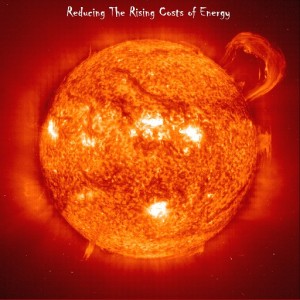R-22 Alternatives – Need AC Refrigerant Than Can Keep Up With Phoenix Heat
 As a result of national ozone layer protection programs, R-22 AC refrigerant, a hydrochlorofluorocarbons (HCFCs) product, is nearing the final legs of merchandise availability. As of January 1 of 2010, stocking and topping-up with virgin R-22 has been banned. Although the use of reclaimed R-22 is still available up to January 1 of 2015, the pricing for the product lends to greater restraints.
As a result of national ozone layer protection programs, R-22 AC refrigerant, a hydrochlorofluorocarbons (HCFCs) product, is nearing the final legs of merchandise availability. As of January 1 of 2010, stocking and topping-up with virgin R-22 has been banned. Although the use of reclaimed R-22 is still available up to January 1 of 2015, the pricing for the product lends to greater restraints.
After January 1, 2015, your Phoenix air conditioning installation and AC repair service center will no longer be permitted to stock or top-up your air conditioning system with virgin or reclaimed R-22 AC refrigerant. While homeowners are not being forced to install new AC equipment, they will be required to upgrade to a non-ozone depleting refrigerant.
Unless planning a new and near-future Phoenix AC installation project, any necessary cooling service requirements should involve a switchover to an environmentally safe, cost-effective and readily available modern refrigerant replacement product. The Glendale air conditioning repair and installation experts at American Cooling and Heating provide area residents and business owners with several products capable of dealing with the Phoenix area heat index. For example: R-438A by DuPont performs well against the toughest Arizona heat waves, provides reliable mineral oil compatibility and installs hassle free.
Mounting Pressure Driving the Removal of R-22 Refrigerant Products
In accordance with the Montreal Protocol on Substances that Deplete the Ozone, all developed countries have agreed to the caps on consumption and production of HCFC products. Although the Montreal Protocol includes various “Critical and Essential Use Exemptions,” home AC refrigerants do not meet any of the phase-out limitations. The supply is drying up.
In striving to remain current with federal requirements and customer needs, American Cooling and Heating investigates every avenue of R-22 alternative services. Customers need a product that provides the cooling power of R-22, holds up to the Phoenix heat index, and enables technicians to provide a quick and relatively inexpensive change over. It’s a simple rule: Get the R-22 out and install new AC refrigerant efficiently and with the least hassle.
Additional Alternatives to R-22 Refrigerant in Residential Air Conditioning
Eliminate of ozone-depleting substances involves a multitude of options. Some of the replacement refrigerant products have proven more energy efficient than R-22 refrigerants. By installing the right combination of coolant and equipment, Phoenix homeowners can increase home cooling efficiency by 30% or more. The associated equipment upgrades, such as inverter air conditioning components, can reduce CO2 emissions, boast energy efficiency and decrease the cost of cooling your home.
Along with R-438A, current EPA reviews of R-22 alternatives include:
- R-410A – A mid-range solution that does not deplete the ozone layer but is still listed as a hydrofluorocarbon that contributes to global warming
- R-407C – Listed as an acceptable R-22 substitute in residential AC products but is not yet available for use in the U.S.
Don’t Rush, But Avoid the Rush
If your home is running a reliable leak free R-22 solution, you need not rush for immediate system replacement. However, 2015 is just around the corner. Remember: Last minute solutions often involve high-pressure decisions. Tax benefits are still available.
As a recommended Phoenix air conditioning installation center, you can count on the technicians from American Cooling and Heating for clear-cut advise on how to best work these legally required changes into your current heating and cooling needs. Don’t wait for the rush. Now is the time to contact American Cooling and Heating.



